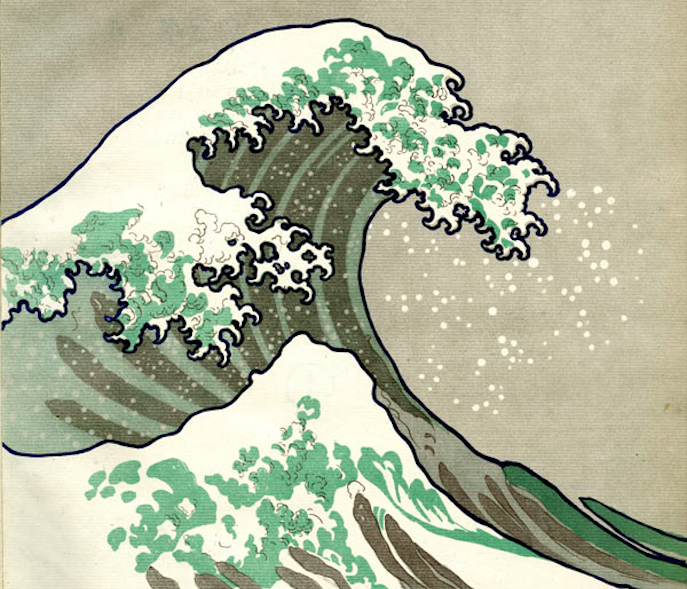
Enhance your reading experience with our complimentary exclusive free-access playlist. Simply click on "Play" to dive into a musical tribute celebrating the lasting cultural bond between France and Japan: a rich, fruitful and mutually enriching love story.
Since the late 19th century, the deepening trade ties between the Western world and the Far East have fostered a reciprocal exchange of influences between Japanese and French cultures. This cross-pollination has significantly impacted various artistic realms including fine arts, literature, architecture, design, and music. A well-known anecdote exemplifies this cultural intertwining: the French composer Claude Debussy is said to have drawn inspiration from a Japanese lacquer box depicting golden fish while composing Poissons d'or (track 1). Similarly, he selected Hokusai's renowned Great Wave off Kanagawa to adorn the cover of the orchestral score for La Mer (tracks 3, 5, 7).
From the earliest days, French composers found inspiration in the mysteries of the Land of the Rising Sun. Well before Puccini's renowned Madame Butterfly, which drew partial influence from Madame Chrysanthème (track 11) by French naval officer and travel writer Pierre Loti, the first French stage work inspired by Japan emerged in 1872, courtesy of Saint-Saëns. This production, La Princesse jaune (track 12), follows a protagonist who falls enamored with a Japanese woman depicted on a screen...
However, this cultural exchange wasn't one-sided. As Japan opened its doors in the mid-19th century, it welcomed wind instrument instructors to train its military musicians, contributing to the remarkable vitality of brass bands, still thriving today among enthusiasts, particularly within educational institutions. Notably, many amateur musicians are familiar with Dionysiaques (track 14) by French composer Florent Schmitt—a figure who paradoxically enjoys greater recognition in Japan than in his homeland.
Tomojiro Ikenouchi (1906-1991), a pioneering Japanese composer who was the first from Japan to attend the Paris Conservatoire, played a pivotal role in advancing music education in Japan. Appointed as a composition professor at Tokyo University of Fine Arts in 1947, he significantly influenced the teaching and practice of music in his homeland. As reflected in your playlist, composers like Toru Takemitsu (tracks 6, 8, 10, 13, and 15)—whose work was profoundly shaped by French chanson and music, notably by Debussy and Messiaen—and Akira Miyoshi (track 2), a former student of the Conservatoire National Supérieur de Musique de Paris, have continued to blend elements of French music with their distinct Japanese style.
Recent events underscore the promising trajectory of Franco-Japanese cultural relations. Events such as the Japan Expo, a renowned institution in Paris, and prestigious exhibitions like the recent retrospective on Hiroshige at the Musée Guimet, exemplify the enduring enthusiasm for the shared cultural wealth between France and Japan.
Through its enduring and steadfast presence in Japan, the French bank Crédit Agricole-CIB actively nurtures this vibrant cultural and humanistic exchange. It supports the global endeavors of Japanese enterprises, provides significant opportunities for major Japanese investors to broaden their investment portfolios, and champions the dissemination of French culture within the nation.

© Claude Debussy - Hokusai's Wave on the cover of La Mer. Three symphonic sketches by Debussy. Paris, Durand, 1905